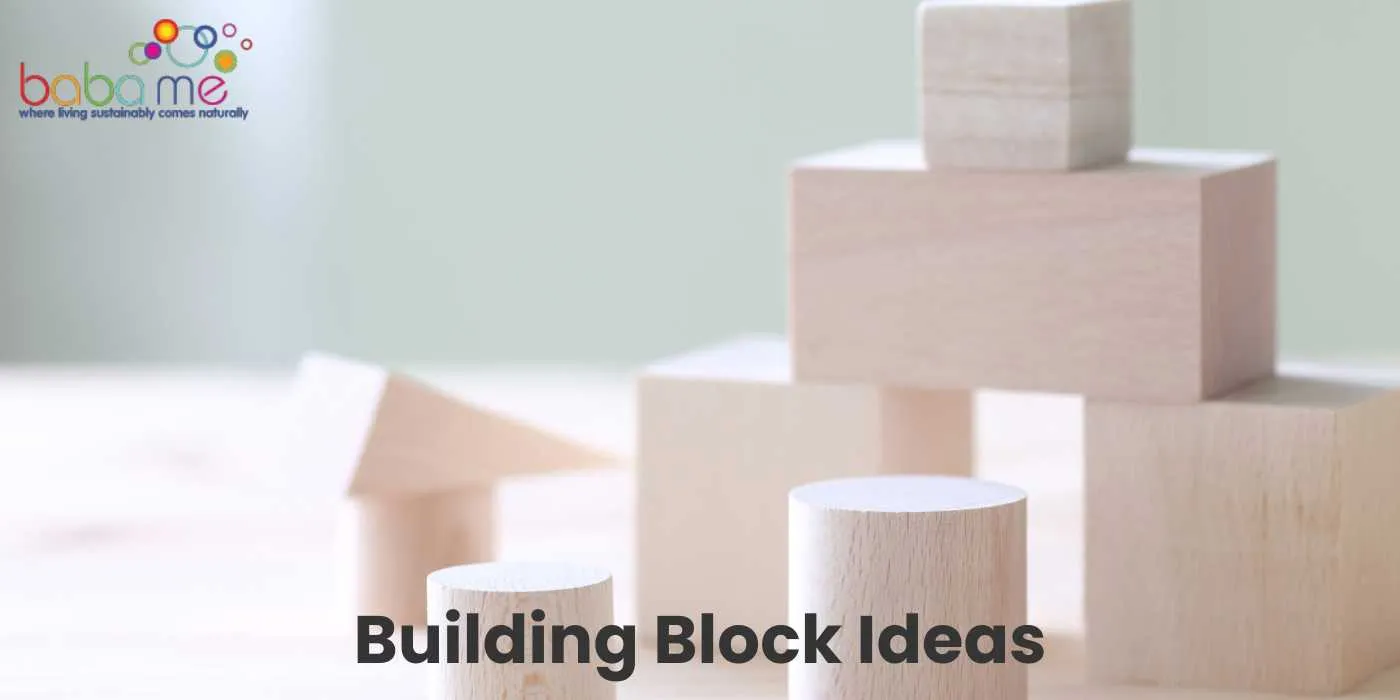In every corner of a child’s room, beneath beds and tucked into toy boxes, lie timeless treasures—building blocks.
These classic toys, often underestimated, are the gateway to worlds beyond our own, where imagination reigns supreme. They’re more than just pieces to stack; they’re tools that spark creativity, teach fundamental concepts, and foster developmental growth.
Join us as we journey beyond the basics, exploring innovative and creative ways to breathe new life into these iconic playthings. Rediscover the magic of building blocks and witness how they transform into vibrant cities, towering castles, and tales only a child’s mind could conjure.
Welcome to the universe of endless possibilities.
Key Takeaways
Building blocks offer endless entertainment while promoting cognitive development.
There are many types of building blocks available, each with unique benefits.
Block play activities can range from STEM challenges to construction and engineering projects.
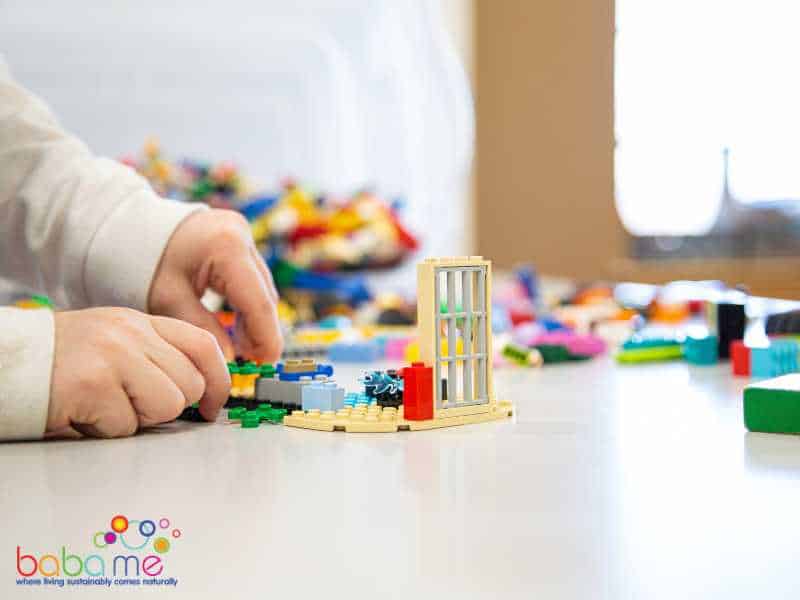
Types of Building Blocks
When it comes to building blocks, there are a variety of options to choose from, each with its own unique features and benefits. Here are some of the most popular types of building blocks:
Wooden Blocks
Wooden blocks are a classic option that have been enjoyed by children for generations. They are durable, natural, and come in a variety of shapes and sizes. Wooden blocks are great for developing fine motor skills, as well as for encouraging creativity and imagination. They can be stacked, arranged, and knocked over to create endless possibilities.
Lego
Lego is perhaps the most well-known type of building block. These plastic interlocking blocks come in a variety of colors and sizes, and can be used to create anything from simple structures to complex designs. Lego is great for developing problem-solving skills, as well as for encouraging spatial awareness and creativity.
Magnetic Blocks
Magnetic blocks are a newer type of building block that have gained popularity in recent years. These blocks use magnets to connect, allowing for unique and intricate designs that can be easily manipulated. Magnetic blocks are great for developing hand-eye coordination and spatial awareness, as well as for encouraging creativity and imagination.
Bristle Blocks
Bristle blocks introduce a different texture and interlocking mechanism to the block play arena. With soft, bristle-like extensions, these blocks easily join together, allowing for curved and rounded constructions. Especially suitable for younger children, bristle blocks encourage tactile exploration, creativity, and the development of motor skills, all while ensuring safety and ease of use.
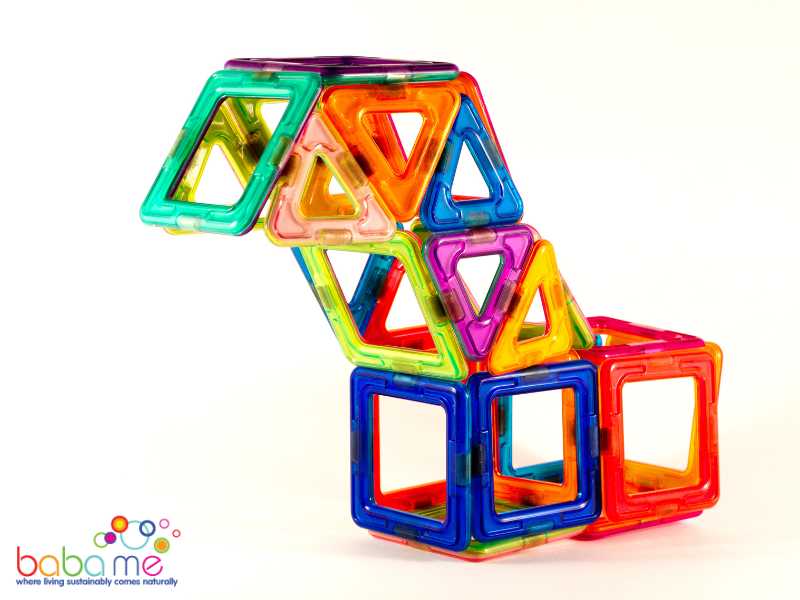
Block Play Activities
| Age Group | Block Play Activities |
|---|---|
| Infants (6-12 months) | – Mouthing and Exploring: Let babies touch and mouth blocks (ensure they’re large enough to be safe from choking). – Sound Play: Use blocks that make noises, like rattles, to catch their attention. |
| Toddlers (1-2 years) | – Stacking Towers: Challenge them to stack 2-4 blocks. – Knocking Down: Build towers for them to knock down. – Color Sorting: Sort blocks by color. |
| Preschoolers (3-4 years) | – Simple Structures: Houses, bridges, and roads. – Pattern Building: Create patterns for them to replicate. – Role-playing: Use blocks as stand-ins for characters or props in imaginative play. |
| Early Elementary (5-7 years) | – Advanced Structures: Castles, cities, and more intricate designs. – Symmetrical Structures: Mirroring patterns or designs. – Problem-solving: Present challenges like building the tallest tower or a bridge between two chairs. |
| Late Elementary (8-10 years) | – Architectural Models: Replicate real-world buildings or structures. – Mazes & Labyrinths: Create intricate pathways. – Physics Challenges: Build ramps, domino chains, or weighted balance structures. |
| Pre-teens (11-12 years) | – Engineering Tasks: Build functional cranes or pulleys. – Artistic Creations: Abstract structures or sculptures. – Collaborative Projects: Work in teams to build cities or reenact historical events with block structures. |
Basic Stacking
One of the fundamental ways to play with building blocks is through basic stacking. This activity involves piling blocks one on top of the other, with the aim of creating as tall a structure as possible without it toppling over.
To begin, select a flat surface and start with larger blocks as the base, gradually using smaller ones as the tower grows. As children engage in basic stacking, they hone their fine motor skills and hand-eye coordination.
This activity introduces concepts of balance and gravity, while also promoting problem-solving as they figure out which blocks will keep their structure stable. It’s a foundational play method that fosters both cognitive and physical development.
Color Sorting
Color sorting with building blocks is a vibrant and interactive way for children to recognize and categorize colors. Start by laying out blocks of various colors before the child.
Encourage them to group blocks by their respective hues—reds with reds, blues with blues, and so on. As the activity progresses, you can introduce mixed piles for a greater challenge.
Color sorting not only boosts a child’s color recognition abilities but also sharpens their organizational skills. It fosters early mathematical thinking by introducing concepts of categorization and set formation.
As children differentiate and sort, they also develop their attention to detail, enhancing observational skills that will benefit them in academic settings.

Build a City
Constructing a mini metropolis with building blocks is a fantastic way to let children’s imaginations run wild. Provide them with an array of blocks and encourage them to lay out roads, erect buildings, create parks, and more.
They can even introduce toy cars or miniature figures to bring their city to life! As they design and build, they’ll be planning and problem-solving, figuring out where each structure should go and how it fits into the broader urban landscape.
“Building a City” nurtures spatial awareness, architectural understanding, and storytelling abilities. By discussing the functions of different parts of their city, children also gain insight into community roles and infrastructure. This activity not only bolsters cognitive and creative development but also provides a fun way for children to understand the world around them.
Shadow Play
Shadow Play with building blocks introduces a magical dimension to block activities. For this, you’ll need a flashlight or a strong light source and a blank wall or a backdrop. Assemble blocks in various configurations and project light onto them to cast intriguing shadows.
Children can experiment by changing the angle of the light or the distance of the block structures to see how shadows morph and shift. This activity promotes an understanding of light, shadow, and basic principles of physics. As kids manipulate blocks and light, they engage in imaginative storytelling, giving life and narrative to the fleeting silhouettes.
Shadow Play not only boosts creativity and scientific curiosity but also enhances observational and analytical skills as children discern the relationship between objects and their shadows.
Story Blocks
Story Blocks is a narrative-driven activity that turns building blocks into tangible elements of a tale. Begin by choosing a theme or a setting—perhaps a jungle adventure, a space expedition, or a day at the zoo. Using blocks, children can construct scenes or characters relevant to the story.
For instance, in a jungle tale, green and brown blocks might become dense forests, while colorful ones turn into exotic birds or animals. As they build, encourage them to narrate the unfolding events, adding depth to their story with each block placement.
This activity enhances language skills, fosters imagination, and introduces the fundamentals of storytelling structure. As children devise plot twists and character arcs using their block creations, they’re not only expressing creativity but also practicing sequencing, problem-solving, and narrative cohesion. Story Blocks seamlessly blends the physical and imaginative worlds, offering a rich developmental experience.

Letter Formation
Letter Formation with building blocks provides a tactile and visual method for children to learn the alphabet. To initiate this activity, present a sample letter on paper or a screen. Then, challenge kids to replicate the shape of the letter using blocks. For example, straight blocks can be used to form letters like ‘L’ or ‘T’, while a combination of straight and angled blocks can be used for more complex letters like ‘R’ or ‘K’.
As they arrange blocks to resemble letters, children develop a better understanding of letter shapes, paving the way for early reading and writing skills. This hands-on approach not only aids in letter recognition but also strengthens fine motor skills and spatial reasoning. Letter Formation with building blocks offers a multi-sensory learning experience that merges play with foundational literacy development.
Pattern Building
Pattern Building with blocks is a visually engaging exercise that introduces children to the world of patterns, sequences, and rhythm. Start by creating a simple pattern, such as red-blue-red-blue, and ask the child to continue it. As they become adept, introduce more intricate patterns or even challenge them to create their own unique sequences.
Engaging in this activity nurtures a child’s cognitive abilities, especially in areas like pattern recognition and prediction—key skills in mathematics and logic. It also enhances their attention to detail and observational capabilities.
Over time, as they experiment with increasingly complex patterns, they’ll develop a more profound appreciation for order, symmetry, and design. Pattern Building is more than just a fun game; it’s a stepping stone to understanding more advanced concepts in math, art, and the natural world.
Counting Towers
Counting Towers is a brilliant activity that combines the joy of block building with the foundational skills of mathematics. To get started, ask children to build towers with a specific number of blocks. For instance, a tower of three blocks, followed by a tower of four, and so on.
As they progress, challenge them to compare tower heights, discern which has more or fewer blocks, or even predict how many blocks they’ll need for the next tower in sequence.
This hands-on approach to counting aids in number recognition and quantity estimation. Building towers not only solidifies their understanding of numerical values but also bolsters their fine motor skills and spatial awareness.
As they compare and contrast, children grasp early concepts of addition and subtraction. Counting Towers seamlessly integrates play with fundamental math skills, laying the groundwork for more advanced mathematical thinking in the future.
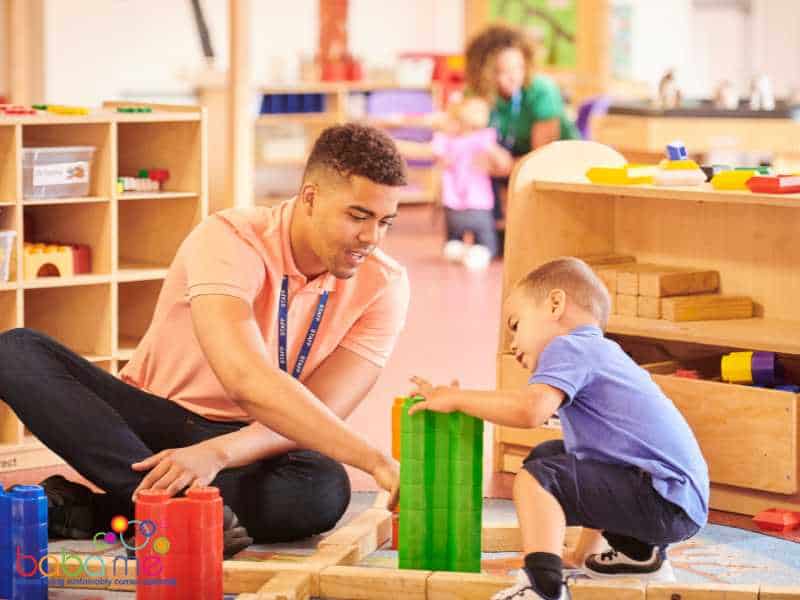
Bridge Building
Bridge Building with blocks introduces children to the fascinating world of engineering and architecture in a hands-on manner. To embark on this constructive journey, provide them with a ‘gap’ or ‘chasm’—this could be a space between two books or two separate pieces of cardboard. The goal is for them to build a bridge spanning this gap using only their building blocks.
As they experiment with different designs, they’ll gain insights into structural integrity, balance, and support. They’ll learn the importance of a sturdy base, the value of evenly distributed weight, and the potential uses of arches and beams. This activity sharpens problem-solving skills, promotes creative thinking, and fosters an early appreciation for design principles.
Bridge Building is not just a fun challenge; it’s an initial foray into the realms of physics and engineering, equipping kids with foundational knowledge they can build upon in academic settings and everyday life.
Domino Chain
Domino Chain is a captivating activity where building blocks take on the role of dominos, creating a mesmerizing chain reaction when set into motion. To set this up, line up blocks on their narrow side in a sequence, ensuring they’re close enough that when one falls, it nudges the next into a tumble.
Children can experiment with curves, turns, and even multilevel setups, discovering how the direction and spacing of blocks affect the cascade.
This delightful play not only offers a visual treat but also deepens understanding of cause and effect, momentum, and sequencing. As kids tinker with their setups, they’re honing fine motor skills, patience, and prediction abilities.
They’ll also experience firsthand the importance of precision and the thrill of anticipation. Domino Chain is both an introduction to basic physics principles and a celebration of the simple joys of chain reactions, making learning undeniably fun.
Balance Challenge
The Balance Challenge is an exhilarating test of skill that pushes the limits of block play. The objective is straightforward: stack and arrange blocks in such a way that they balance, even in seemingly improbable configurations.
This could involve balancing a block on its corner, creating an overhanging structure, or even constructing a teetering tower.
As children immerse themselves in this challenge, they’re engaging deeply with concepts of gravity, equilibrium, and weight distribution. Every placement requires keen observation, steady hands, and a strategic mind, developing fine motor skills and spatial reasoning.
The Balance Challenge also fosters resilience and patience; not every attempt will succeed, but each failure offers a lesson in physics and perseverance.
By merging play with principles of balance and stability, children are not only refining their motor skills but also laying the groundwork for future understanding in science and engineering fields.

Maze Creation
Maze Creation transforms building blocks into a labyrinthine world of twists, turns, and dead ends. Begin by designating a start and finish point on a flat surface. Then, using blocks, children can construct winding pathways, intricate corridors, and challenging obstacles in between these points. Once the maze is complete, they can navigate it using a toy figure, marble, or even their fingers.
Creating a maze fosters strategic thinking, as children must consider the best routes and how to introduce complexities to challenge the navigator. It promotes spatial awareness and boosts problem-solving skills as they determine how to connect different paths while avoiding unintentional blockages.
This activity also allows for creativity, as mazes can have themes, levels, and even hidden treasures. Maze Creation is not just a journey through interconnected paths; it’s an expedition into the depths of logic, design, and imaginative play, offering endless avenues of learning and exploration.
Ramp and Roll
Ramp and Roll is an exhilarating activity that combines the thrill of motion with the principles of gravity and friction. Using building blocks, children construct inclined planes or ramps of varying heights and angles. Once the ramps are built, they can roll small objects, like marbles or toy cars, down them to observe their speed, trajectory, and distance traveled.
This dynamic play introduces kids to foundational physics concepts. They’ll start to understand how the angle and smoothness of the ramp influence speed and distance. As they adjust and experiment with different inclines and surfaces, they’re practicing prediction and observation.
The trial-and-error nature of this activity also cultivates resilience, patience, and adaptability. Ramp and Roll doesn’t just offer fast-paced fun; it serves as a gateway to basic mechanics, enabling children to grasp complex ideas through intuitive, hands-on exploration.
Animal Pens
Animal Pens is a delightful activity that invites children to create specialized habitats for their toy animals using all the blocks. Begin by selecting a few different animals—maybe a lion, a sheep, and a penguin. Then, challenge kids to construct pens or habitats suitable for each one, considering the animal’s unique needs and natural environment.
In crafting these pens, children delve into basic zoology concepts. They’ll ponder what kind of space a lion needs versus a penguin, perhaps incorporating water elements for aquatic creatures or sheltered nooks for animals that prefer seclusion. It encourages research, empathy, and design thinking as kids strive to make each habitat comfortable and appropriate.

Classify by Size
Classify by Size is an engaging sorting activity that encourages children to categorize building blocks based on their dimensions. Start by spreading out a mix of differently sized blocks.
The objective is for kids to group them—whether it’s from smallest to largest, thinnest to thickest, or shortest to tallest. They can also create sequences where each block is slightly larger than the previous one.
This seemingly simple task introduces children to foundational math concepts, such as comparison, ordering, and measurement. As they sort, they’re honing their observational skills, learning to differentiate objects based on specific attributes.
It also develops their vocabulary as they use terms like “bigger,” “smaller,” “taller,” and “shorter” to describe their classifications.
Symmetrical Structures
Symmetrical Structures challenges children to delve into the world of balance and harmony by constructing mirrored designs with building blocks. Begin by setting up a central line using a string or a piece of tape.
The goal is for kids to create a design on one side and then replicate its mirror image on the other side of the line, ensuring both sides are symmetrical, whether its a simple block wall or more complex block tower.
Engaging in this activity introduces the concept of symmetry, a fundamental aspect of geometry and art. Children will sharpen their observational skills, comparing both sides to ensure they match precisely. It also requires precision, patience, and spatial reasoning to achieve a harmonious design.
Block Bowling
Block Bowling is a dynamic twist on the classic game, allowing children to create their own bowling lanes and pins using building blocks. Start by assembling ‘pins’ using upright blocks, spacing them out in a traditional triangle formation or any desired pattern. Then, designate a starting line and use a small ball or a round toy as the bowling ball. The aim is for kids to roll the ball and knock down as many block pins as possible.
These block activities for preschoolers provide a hands-on lesson in force, trajectory, and cause-and-effect. As children adjust their throwing strength and angle, they gain a better understanding of motion dynamics. It also encourages hand-eye coordination, precision, and strategic thinking, as they figure out the best approach to knock down the most pins.
Role-playing with Blocks
Role-playing with Blocks breathes life into these inanimate objects, allowing children to weave intricate stories and scenarios. Begin by designating specific blocks to represent characters, items, or settings. A tall block might become a sentinel guarding a castle, while a group of colorful blocks could represent a bustling market.
Encourage children to set up scenes, enact dialogues, and create evolving narratives around these block-based roles.
This form of imaginative play is paramount in fostering empathy, creativity, and linguistic skills. As children assign personalities and motives to blocks, they’re practicing perspective-taking and understanding different viewpoints. They also expand their vocabulary and verbal expression as they craft dialogues and narratives and lead to much creative family fun.
Tunnels and Arches
Tunnels and Arches introduces children to the enchanting world of subterranean and overhead passages using building blocks. Begin by encouraging kids to create long tunnels using blocks on either side and placing a flat block on top. Similarly, for arches, they can experiment with curved designs, bridging gaps between other structures.
As they delve into these building block activities, children confront the architectural and engineering principles of support, weight distribution, and balance. Tunnels and arches require blocks to bear weight in specific ways, teaching kids the essence of foundational support and the role of keystones in maintaining an arch’s integrity.
Timed Challenges
Timed Challenges add an exhilarating edge to the art of block buildings. In this activity, children are given a specific task to complete within a set timeframe.
For instance, they might be challenged to construct the tallest tower they can in two minutes or create a bridge between two objects in just five minutes. A timer or stopwatch keeps track, injecting a sense of urgency and excitement into this toddlers block play.
This activity sharpens a range of skills simultaneously. Under the pressure of time, children practice rapid decision-making, problem-solving on the fly, and efficient use of materials.
It also fosters resilience and adaptability; not every timed challenge will be successful, but each attempt offers valuable lessons in strategy and perseverance and you can add timers to any of the block play ideas above for added fun.
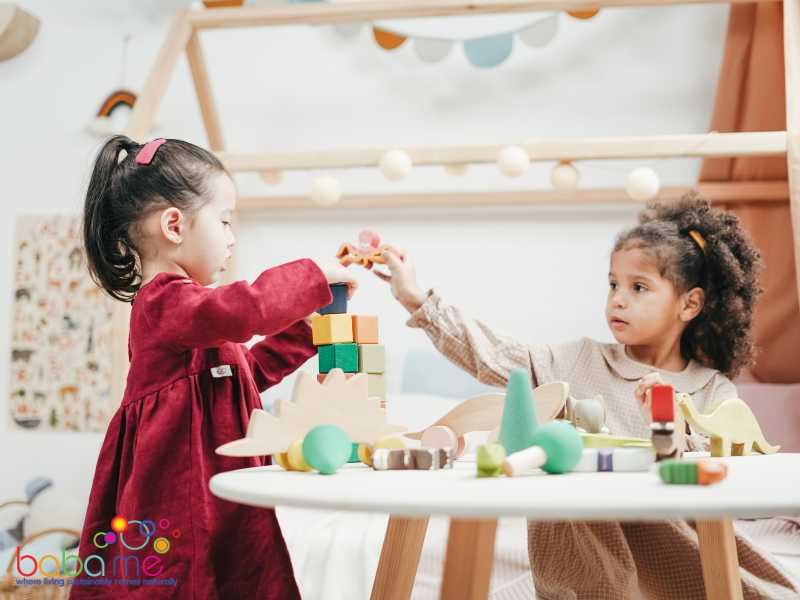
Obstacle Course
Transform your block center into a thrilling playground with the Obstacle Course, a fun block activity designed to challenge and entertain. Start by creating a diverse path using lego blocks, block patterns, and any other building materials at hand.
Craft intricate turns, hurdles, and balance beams, ensuring each section of the course offers a unique challenge.
Kids can navigate their toys, or even themselves, depending on the scale of the course, through this labyrinth of block-based challenges. Encourage them to hop over lego block barriers, walk along block patterns, and maneuver around the curvatures.
This activity promotes spatial awareness, motor skills, and problem-solving. As children discern the best way to navigate each section, they’re actively engaging in critical thinking and physical coordination. The Obstacle Course, beyond its fun facade, is a dynamic tool for developmental growth, merging the tactile world of building blocks with the kinetic joy of movement.
FAQs on Activities with Blocks for Preschoolers
What can I make with building blocks?
Building blocks are incredibly versatile. Adults and children alike can craft a plethora of structures, ranging from simple towers and bridges to intricate cityscapes and mazes. With a bit of imagination, you can create castles, skyscrapers, vehicles, and even abstract art pieces. The possibilities are nearly endless, limited only by the number of blocks and the bounds of your creativity.
What children can make with blocks?
Children often use building blocks to recreate their surroundings and narratives from their imagination. They might build houses, zoos, airports, or playgrounds. Kids also enjoy making simple creatures, vehicles, and abstract patterns. Often, their creations are influenced by their experiences, stories they’ve heard, or even lessons from school. Blocks provide an open-ended medium for children to express their understanding and imagination.
What is building blocks activity?
A building blocks activity refers to any task or play session where individuals, often children, use building blocks to create structures, designs, or patterns. These activities can be free-form, with no specific guidelines, or structured, where there might be specific challenges or objectives to achieve. The main goal is to foster creativity, spatial understanding, motor skills, and cognitive development.
What is a good building block?
A good building block is sturdy, easy to handle, and free from harmful chemicals or sharp edges. It should be durable and stackable, facilitating seamless building and creativity. Blocks made of high-quality materials like wood or non-toxic plastics tend to last longer and are safer for children. The best building blocks also come in varied shapes and sizes to allow for diverse constructions and challenge different levels of building expertise.
What can I make with bristle blocks?
Bristle blocks are unique because of their interlocking bristles, making them especially suitable for younger children. You can create 3D objects like animals, vehicles, and buildings. Their design encourages more rounded and curved creations, differing from the typical straight-edged constructs of traditional blocks. Kids often enjoy making imaginative creatures, trees, flowers, or even abstract designs, as bristle blocks offer a tactile and flexible building experience.

